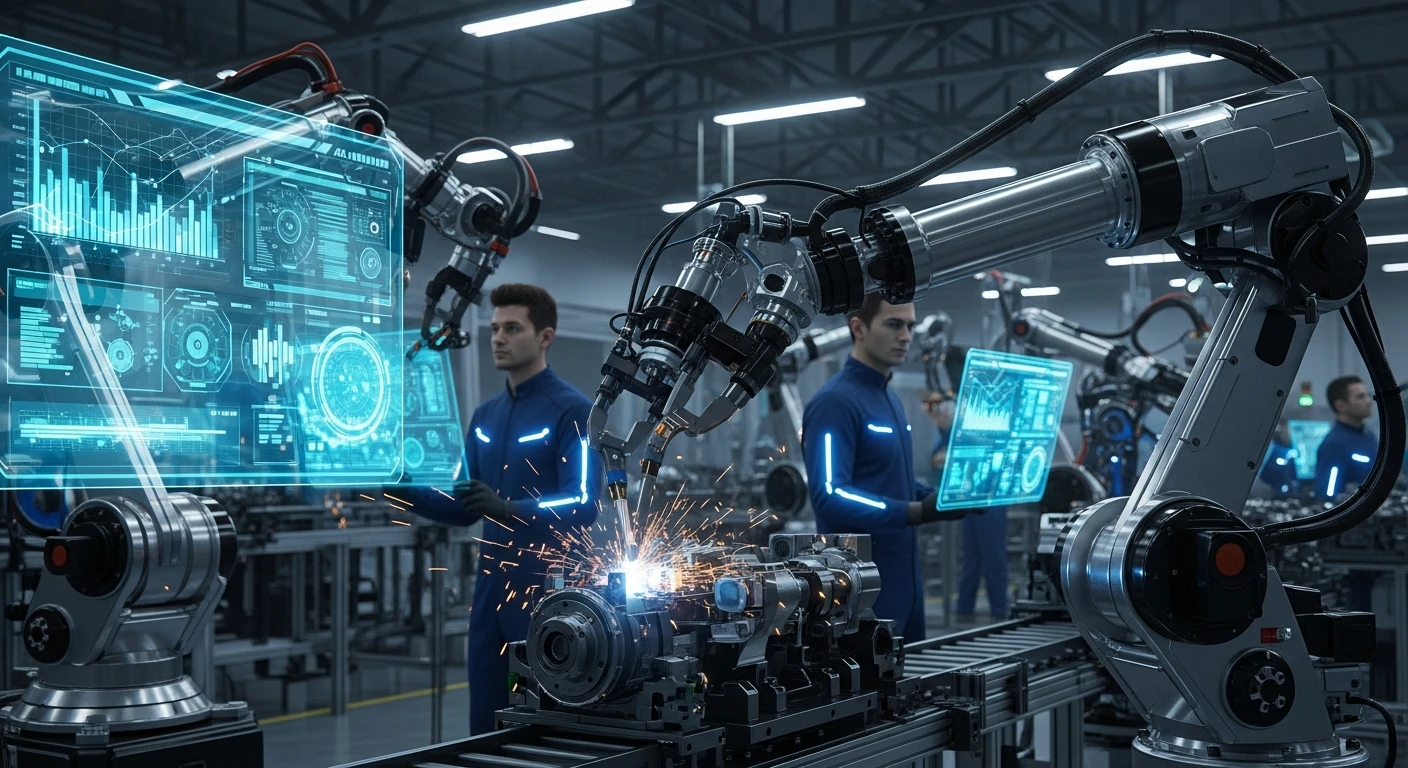In the relentless pace of modern manufacturing, ensuring impeccable quality while maintaining high-speed production presents an extraordinary challenge that can make or break operational success. Lines producing everyday items like batteries or soft drink cans often operate at staggering rates of 1,000 to 2,000 units per minute, leaving no margin for error or delay in quality checks. A single missed defect can tarnish a brand’s reputation, while even minor slowdowns risk costly bottlenecks. Traditional approaches, such as manual inspections or selective sampling, fall short under these intense conditions, unable to match the speed or scale required. Artificial intelligence (AI) has emerged as a transformative force, offering real-time inspection capabilities with unmatched precision. Yet, the effectiveness of AI hinges on how it’s deployed—whether through edge computing, on-premise systems, or cloud platforms. This exploration delves into the reasons edge-first AI stands out as the optimal solution for high-speed manufacturing environments, addressing not just speed but also security and reliability. By processing data directly at the production line, edge AI meets the stringent demands of modern manufacturing, ensuring that quality control keeps pace with production without compromising on critical operational needs.
The Need for Speed in Quality Inspection
High-Speed Manufacturing Challenges
The sheer velocity of high-speed manufacturing creates a landscape where quality inspection must be both instantaneous and flawless to avoid catastrophic disruptions in production lines that churn out thousands of units per minute. Whether it’s disposable razors or beverage containers, these lines operate under extreme pressure, where even a momentary lapse in quality control can lead to defective products slipping through to consumers. Such failures not only risk customer dissatisfaction but also potential recalls that can damage a company’s bottom line and reputation. Traditional methods like manual checks are simply outpaced by these volumes, as human inspectors cannot possibly evaluate each item in fractions of a second. Even acceptance sampling, where only a portion of output is tested, introduces significant risks by allowing unchecked flaws to reach the market. The stakes are incredibly high in these environments, demanding a solution that can match the tempo of production while maintaining rigorous standards. AI has stepped into this gap, providing automated inspection that can analyze products at lightning speed, but the deployment method of this technology remains a critical factor in its success.
Beyond the basic challenge of keeping up, high-speed manufacturing also contends with the complexity of diverse product types and inspection points along sprawling production lines. Each stage, from raw material assessment to final packaging, may require unique quality checks, multiplying the demand for rapid decision-making. A delay at any point can cause a domino effect, leading to queue overflows or production halts that are costly in both time and resources. For instance, in battery manufacturing, the inspection process must identify defects in mere milliseconds to prevent bottlenecks. This environment underscores the inadequacy of centralized data processing systems that introduce latency by sending information to distant servers. The need for immediacy pushes manufacturers toward localized solutions that can handle vast data streams without faltering. Edge AI, by operating directly at the source, addresses this urgency, ensuring that quality assessments are not just fast but also seamlessly integrated into the relentless flow of production, minimizing disruptions and maximizing efficiency.
Time Constraints and Real-Time Decisions
Delving deeper into the mechanics of high-speed quality control, the time constraints are astonishingly tight, often requiring an entire inspection cycle to complete in just 40 to 50 milliseconds, which includes every step from capturing a high-resolution image to final decision-making. This narrow window encompasses every step—from capturing a high-resolution image of a product to transferring the data, running AI inference to detect defects, and signaling a programmable logic controller to remove faulty items from the line. Each segment of this process is meticulously timed, with image capture and transfer taking around 10 to 15 milliseconds and AI analysis consuming another 15 to 20 milliseconds. Any deviation or delay, such as routing data to a remote server, can push the cycle beyond acceptable limits, risking data loss or production slowdowns. Edge computing eliminates this threat by processing data locally, often mere inches from the production line, ensuring that decisions are made within the required timeframe. This immediacy is not a luxury but a necessity in environments where even a slight overrun can cascade into significant operational setbacks.
Moreover, the unforgiving nature of these time budgets highlights why alternative AI deployment methods often fall short in high-speed scenarios. Cloud-based systems, while powerful for other applications, introduce unpredictable latency due to data transmission over external networks, sometimes adding 10 milliseconds or more to the process. Such delays are untenable when every fraction of a second counts, as they can lead to missed defects or overwhelmed systems unable to keep up with production rates. On-premise centralized systems, while faster than cloud solutions, still struggle with the sheer volume of real-time data in sprawling facilities, often becoming bottlenecks themselves. Edge AI stands apart by decentralizing processing, ensuring that each inspection point operates independently and swiftly. This approach not only meets the strict temporal demands but also prevents the accumulation of unprocessed data, safeguarding the integrity of the production line against the relentless pace of modern manufacturing demands.
Advantages of Edge-First AI
Security Benefits in a Connected World
In an era where cyber threats loom large over industrial operations, safeguarding production data has become a critical priority for manufacturers across all sectors. Every time data leaves the plant for external processing, it creates a potential entry point for cyberattacks that could compromise intellectual property, disrupt operations, or even lead to ransomware demands. Industries like pharmaceuticals and food processing face especially dire consequences from breaches, as stolen data or system downtime can trigger regulatory violations, product recalls, and erosion of customer trust. Edge computing offers a robust defense by keeping real-time quality data within the plant’s secure environment, drastically reducing the need for external transmission during critical operations. While broader analytics may still require cloud connectivity, limiting such interactions to non-time-sensitive tasks minimizes exposure to risks. This localized approach ensures that sensitive information stays protected, allowing manufacturers to focus on quality without the constant shadow of digital vulnerabilities threatening their operations.
Additionally, the security advantages of edge AI extend beyond mere data containment to address the evolving nature of cyber threats targeting manufacturing. As production systems become increasingly digitized, the attack surface expands, making every connected device a potential weak link that could compromise the entire operation. Edge computing mitigates this by isolating real-time processes from external networks, ensuring that even if a breach occurs elsewhere in the system, the core quality inspection functions remain unaffected. This is particularly vital in high-stakes environments where downtime from a cyber incident could cost millions in lost production. Furthermore, by reducing reliance on constant internet connectivity, edge solutions shield operations from disruptions caused by network-based attacks or service interruptions. This layered security approach not only protects data integrity but also preserves operational continuity, providing manufacturers with peace of mind in an increasingly hostile digital landscape where every precaution counts.
Resilience and Operational Continuity
System resilience stands as another cornerstone of edge-first AI, ensuring that manufacturing operations remain uninterrupted even in the face of technical failures. Unlike centralized systems—whether on-premise or cloud-based—where a single point of failure can bring an entire plant to a standstill, edge computing distributes processing across multiple devices located at individual production lines. If one edge device encounters an issue, the impact is confined to that specific line, allowing other segments of the operation to continue without disruption. This decentralized architecture is particularly valuable in high-speed manufacturing, where downtime translates directly into lost output and revenue. While managing a larger number of devices can increase maintenance demands, the trade-off is a significant boost in overall uptime and reliability, making edge AI a practical choice for environments where every moment of production matters.
Equally important is the ability of edge AI to operate independently of external factors that often plague centralized systems, such as internet outages or server failures. Cloud-based solutions, for instance, are vulnerable to disruptions caused by network issues, weather events, or hardware malfunctions at remote data centers, any of which can halt quality inspections across an entire facility. Edge devices, by contrast, function autonomously, relying solely on local hardware and power, which ensures continuity even when external connections are severed. This independence is a lifeline for manufacturers operating in remote locations or regions with unreliable infrastructure, where connectivity cannot be taken for granted. By prioritizing resilience through localized processing, edge AI not only protects against internal failures but also shields operations from external uncertainties, reinforcing its role as a cornerstone of robust quality control in demanding manufacturing settings.
Beyond Real-Time: Broader Analysis Needs
On-Premise vs. Cloud for Long-Term Insights
While edge AI excels in real-time quality control, manufacturers often require deeper analysis for tasks like trend identification, root cause analysis, or benchmarking across multiple plants, prompting a choice between on-premise and cloud systems. On-premise solutions offer distinct advantages, including enhanced data security since information never leaves the facility, and predictable costs after the initial investment. These systems provide a level of control that many manufacturers value, especially in regulated industries where compliance is non-negotiable. However, the upfront capital required for hardware and infrastructure can be substantial, and scaling up often involves significant time and expense. Despite these hurdles, on-premise setups can prove more economical over extended periods, with costs stabilizing compared to recurring cloud fees. This makes them a viable option for organizations with long-term planning horizons and a preference for owning their technological assets outright.
Conversely, cloud platforms bring flexibility and scalability that on-premise systems struggle to match, allowing manufacturers to access advanced analytics tools and expand capacity instantly without heavy initial outlays. This is particularly beneficial for dynamic operations that may need to integrate data from multiple locations or adapt to fluctuating production demands. Yet, the trade-offs are notable—cloud solutions often come with higher ongoing operational costs that can accumulate unpredictably over time. Additionally, reliance on internet connectivity introduces risks of downtime during outages, alongside heightened security concerns as data travels beyond the plant’s secure perimeter. Manufacturers must weigh these factors carefully, balancing the allure of cloud scalability against the potential vulnerabilities and expenses, ensuring that the chosen system aligns with both analytical needs and broader operational priorities.
Tailoring Solutions to Manufacturing Needs
Not every manufacturing environment demands the immediacy of edge computing, particularly in sectors with slower production cycles such as automotive or aerospace, where processes can span seconds to days rather than milliseconds. In these scenarios, centralized systems—whether on-premise or cloud-based—become feasible for quality control and data analysis, offering the luxury of time to process information without the risk of production bottlenecks. The focus shifts from raw speed to other considerations like cost efficiency, scalability, and data security. For instance, a manufacturer with a stable, predictable output might prioritize on-premise systems to avoid recurring cloud expenses, while a multinational operation could lean toward cloud platforms for seamless multi-plant data integration. This flexibility underscores the importance of assessing specific operational contexts before committing to a technological framework, ensuring that the solution matches the unique rhythm and requirements of the production environment.
Furthermore, the diversity of manufacturing needs highlights the value of a hybrid approach, where edge AI handles real-time demands, and centralized systems manage longer-term insights. In slower-paced industries, combining these technologies allows for a balanced strategy—edge devices can still perform immediate checks at critical points, while centralized platforms aggregate data for comprehensive analysis over time. This tailored deployment ensures that no single system is overstretched beyond its optimal use case, maximizing efficiency across the board. Manufacturers must also consider future scalability, anticipating how production volumes or regulatory demands might evolve over the coming years, such as from now through 2027. By aligning technological choices with both current and projected needs, companies can build a resilient quality control infrastructure that adapts to change without sacrificing performance or security, ensuring sustained competitiveness in a complex industrial landscape.
AI as a Transformative Tool
Cost-Effective Quality Control
Artificial intelligence has redefined quality control in manufacturing by delivering high-speed inspection capabilities on standard, off-the-shelf hardware, a stark contrast to the expensive, specialized equipment demanded by traditional vision systems. Older methods often required custom machinery that could cost prohibitively high amounts, especially for manufacturers needing multiple inspection points across extensive production lines. AI, by leveraging widely available computing resources, slashes these costs significantly, making advanced quality control accessible to operations of varying scales. This affordability does not come at the expense of performance—AI systems can detect defects with precision at the rapid pace of high-speed lines, ensuring that quality remains uncompromised. For small to medium-sized manufacturers, this democratization of technology levels the playing field, allowing them to compete with larger players without the burden of exorbitant capital investments, fundamentally reshaping how quality is maintained in the industry.
Moreover, the cost-effectiveness of AI extends to its scalability, enabling manufacturers to expand quality control measures as production grows without facing exponential cost increases. Adding inspection points with traditional systems often meant purchasing additional high-cost hardware for each new station, a barrier that AI eliminates through software-driven solutions that can run on existing or modestly upgraded devices. This flexibility is particularly crucial in industries facing fluctuating demand, where the ability to adjust quality control capacity quickly can be a competitive edge. Additionally, the reduced need for specialized maintenance further lowers the total cost of ownership, as standard hardware is typically easier and cheaper to service than niche equipment. By embedding AI into quality processes, manufacturers gain a tool that not only meets immediate inspection needs but also supports long-term financial sustainability, reinforcing its transformative impact on operational efficiency and market adaptability.
Adaptability Across Manufacturing Types
The versatility of AI, particularly when paired with edge computing, makes it an invaluable asset across a spectrum of manufacturing types, from high-speed continuous lines to batch processing environments. In high-speed scenarios, such as the production of consumer packaged goods, AI ensures that each unit is inspected within milliseconds, maintaining quality without slowing the relentless pace of output. In batch manufacturing, where products like cookies or bricks are processed in groups, the challenge shifts to inspecting multiple items simultaneously within a single cycle. Edge AI rises to this task by handling the cumulative processing load—evaluating dozens of items on a tray in a tight timeframe—ensuring that no defect goes unnoticed. This adaptability allows manufacturers to apply a consistent quality control framework across diverse production models, streamlining operations and reducing the need for separate systems tailored to each process type.
Equally significant is AI’s ability to integrate into varying operational scales and complexities, catering to both large-scale industrial plants and smaller, specialized facilities. For instance, in smaller batch operations where production runs may be shorter but still require precise quality checks, edge AI can be deployed on compact, cost-effective hardware without sacrificing accuracy. This scalability ensures that manufacturers are not locked into rigid technological solutions but can customize deployments based on specific line requirements or product characteristics. Furthermore, AI’s learning capabilities allow it to adapt over time, refining inspection algorithms as it processes more data, which enhances precision across different manufacturing contexts. By offering a flexible, powerful toolset, AI paired with edge computing supports a wide array of industrial needs, ensuring that quality control remains robust and responsive regardless of the production environment’s unique demands.









